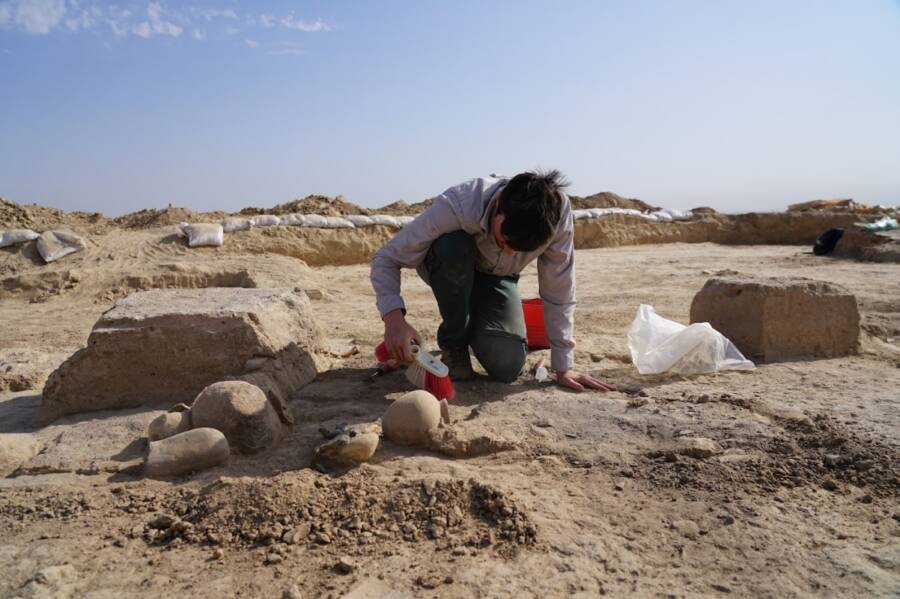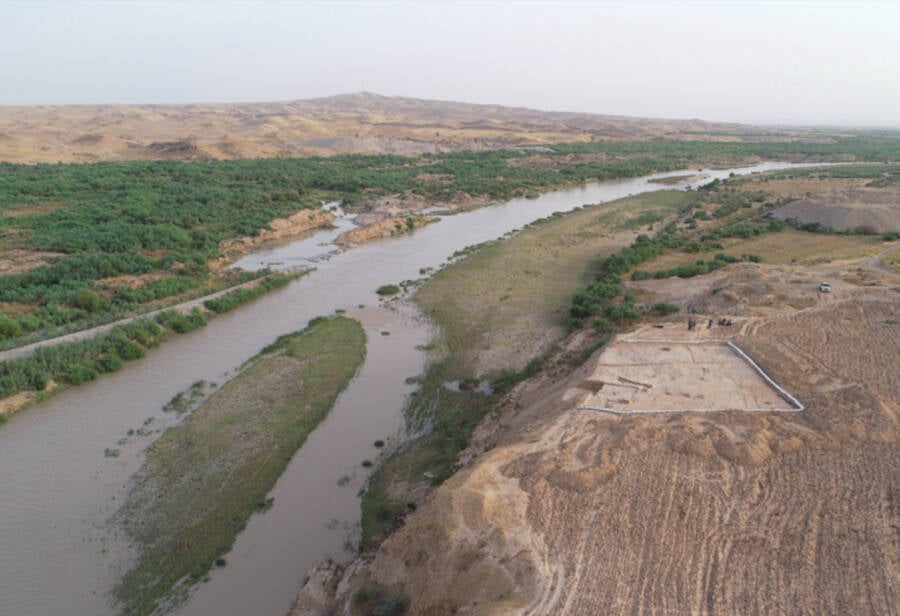Ruins of the 4th-millennium B.C.E settlement at Shakhi Kora in Iraq have revealed the rise of centralized government — and then its sudden and apparently deliberate dismantling.

Antiquity Journal/FacebookAn archaeologist at work at the Shakhi Kora settlement in Iraq.
Throughout history, the rise and fall of governments often seems to follow the same cycle. A group of people centralize and form a government, the government lasts for some time, and then it falls, often because of political upheaval, violent revolt, or environmental calamity and natural disaster.
But a 5,000-year-old site in Iraq appears to upend this historical pattern. Archaeologists at Shakhi Kora have found evidence of a government that formed and then, when it seemed to no longer serve a purpose, was peacefully dismantled.
Though centralized governments reappeared in the region some 1,500 years later, the findings at Shakhi Kora challenge the idea that “top-down, hierarchical forms of government” were an inevitable development in the course of human history.
The Rise Of The Shakhi Kora Settlement In Ancient Iraq
According to a new study published in the journal Antiquity, archaeologists made their discovery while excavating the 4th-millennium B.C.E settlement of Shakhi Kora in southern Iraq. Excavations at the site have taken place since 2019, as part of the Sirwan Regional Project, in collaboration with the Garmian Directorate of Antiquities, Kurdistan Region of Iraq, and have offered up some interesting insights about ancient life at the settlement.

C. Glatz et al.A pillared structure unearthed at Shakhi Kora.
Researchers found structures that were used across several centuries as well as “large quantities” of simple bowls. These bowls were apparently used to serve communal meals — archaeologists determined that they once contained protein-rich stews — which in turn suggest that people possibly gathered at the site as workers. The emergence of a government at Shakhi Kora, then, likely served the purpose of distributing food, possibly as payment for labor.
Over time, the settlement took on other attributes as well. Earlier cultural items found at the site reflect local traditions, but these items eventually came to take on attributes from Uruk, an ancient Iraqi city. Uruk was one of the world’s first cities, known for its inscribed clay tablets, and bowls found at Shakhi Kora came to resemble Uruk bowls in style.

C. Glatz et al.Bowls found at the site suggested that a government had formed as a centralized way to offer large, communal meals to workers, possibly as payment for their labor.
Shakhi Kora seemed to be evolving, even picking up trends from larger cities. But then, something surprising happened: The people living there decided to leave.
How The Centralized Government At Shakhi Kora Eventually Collapsed — And Why
Archaeologists found that after centuries of use, Shakhi Kora was abandoned. However, there was no indication that the government at Shakhi Kora had been violently overthrown, nor that people had abandoned the site due to environmental pressures. Rather, it seems that the ancient people living there made a conscious decision to leave the settlement.

C. Glatz et al.An aerial view of the Shakhi Kora site in southern Iraq.
They had apparently decided to “reject” centralized government, the likes of which did not reappear in the region again for almost 1,500 years.
“Our excavations at Shakhi Kora provide a unique, new regional window into the development, and ultimately the rejection, of some of the earliest experiments with centralized, and perhaps state-like, organization,” the study’s lead author Professor Claudia Glatz of the University of Glasgow, remarked in an Antiquity Facebook post. She added: “This reaffirms that top-down, hierarchical forms of government were not inevitable in the development of early complex societies. Local communities found ways to resist and reject tendencies towards centralized power.”
As such, Shakhi Kora is a good example that history is often not “A-to-B.” Societies and governments formed in fits and starts, and rather than increasingly congregate in one place, at least some ancient people chose to return to a different way of living their lives.
After reading about the 5,000-year-old government that was apparently peacefully dismantled in Iraq, learn about the oldest structures in human history. Then, read about the earliest cities in the world.





